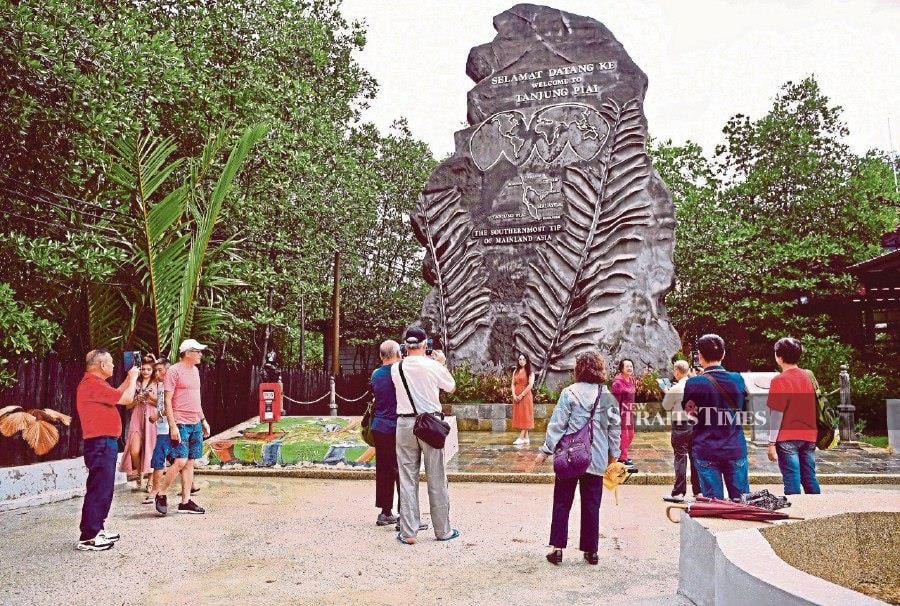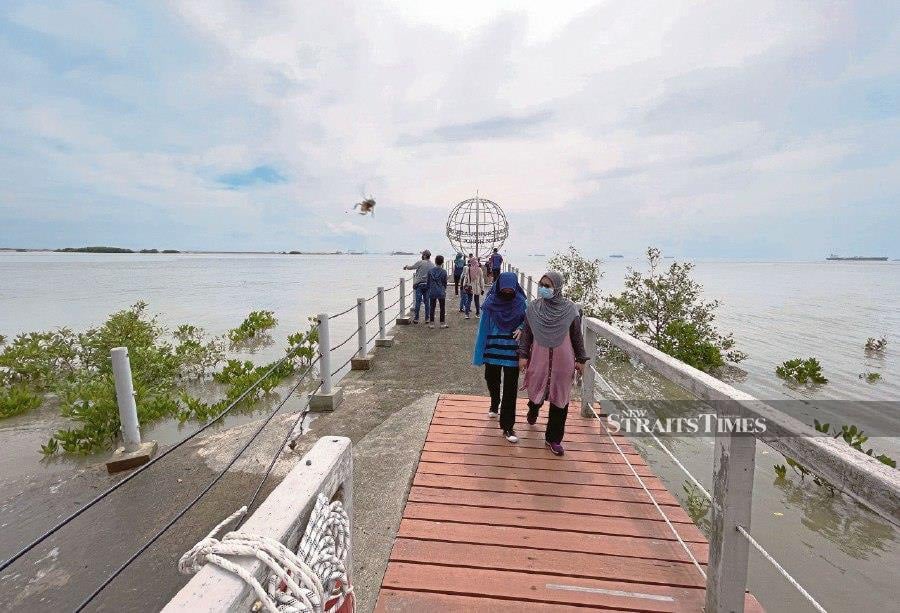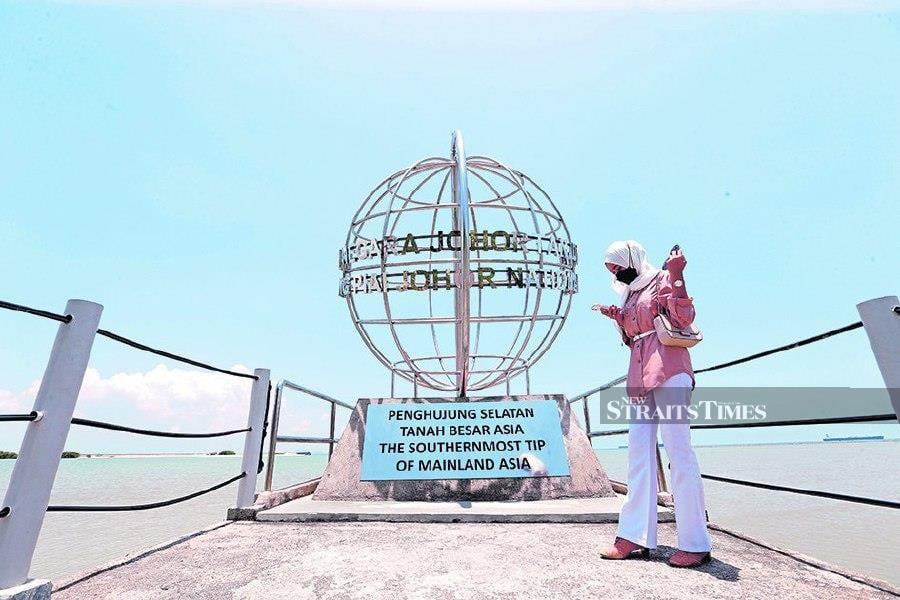KUALA LUMPUR: On the water edge of Tanjung Piai, Johor, lies a steel globe structure marking the spot the farthest south a person can go while still standing on mainland Asia.
There's a wooden boardwalk leading up to the point, where one can stand between three neighbouring countries - Malaysia, Indonesia, and Singapore.
The southernmost tip of Mainland Asia, which is located in the Tanjung Piai Johor National Park is surrounded by a dense mangrove forest that is home to more than 20 species - one of the largest in the world.
The park was established in 1997 with the aim of conserving the mangrove swamps and muddy areas, among others.
The 325-hectares park was recognised by the Ramsar Convention as a Ramsar Site, or Wetlands of International Importance in 2003.
Sharing the history behind the mangrove forest, history activist Jamal Ahmad said Tanjung Piai was initially not meant to be a mangrove forest.

"Back then, Tanjung Piai was not inhabited. So when British colonial official Sir Stamford Raffles came in, he planned to open a port in Tanjung Piai.
"But when he saw the strong waves and tide, he changed his mind and chose to build a port in Singapore.
"Raffles then instructed for mangroves to be planted as a buffer for the strong tides," he said, adding that the muddy soil had contributed to the growth of the mangroves in Tanjung Piai.
Located in the Serkat sub-district, Tanjung Piai is said to have gotten its name from the golden leather fern (Pokok Piai), which grows healthily in the area.
Jamal said during that era in the 1800s, Tanjung Piai was known for its clean environment and abundant fisheries that had helped the local economy.
The New Straits Times recently took a trip down south to Johor to visit the area.

Located about 70 km from Johor Baru, the journey towards the national park might be taxing for travellers, passing through different villages, orchards and palm oil plantations by road.
While the wetland habitat in the swamp could exert an eerie vibe, mangroves have its own distinct beauty and elegance.
The extensive mudflats passing through the dense mangrove forest are an attraction for creatures such as crabs, mudskippers, cockles and lizards to thrive and squelch about and it also hosts a population of long-tailed macaques and dusky leaf monkeys.
Seagulls and migratory birds from the Northern Hemisphere such as China, Russia, Japan and Korea also frequent Tanjung Piai to seek protection and food sources during the cold weather.
The park has ample facilities for visiting visitors including a 1.2 km network of twin walkways, a visitor complex housing an information gallery, a fishing jetty and observatory towers for visitors to observe the abundant species of birds who consider the mudflats as a feeding ground.
While Tanjung Piai had managed to contribute to local tourism in recent years, Jamal who was born and raised in Serkat said more needs to be done to ensure that tourists and travellers want to return to Tanjung Piai.
"It's good that we managed to bring in tourists and contribute to the economy but they are not that diligent in protecting the environment.
"We also need more facilities to promote and develop Tanjung Piai that would not disturb the ecosystem, for example an archway.
"The current plan doesn't help to promote tourism. They (tourists and travellers) would come and see the mangroves go back home like it's nothing," he said.

Jamal also called for both the Tanjung Piai National Park and homestay owners to work together to promote tourism in the area and ensure that travellers and tourists would enjoy their time in Tanjung Piai.
"It's the Southernmost point of (mainland) Asia but our assemblymen took it (building an archway in for Tanjung Piai) lightly because they said it won't bring in money.
"We need to emulate other countries and build facilities or maybe pools that could attract more people so that they have other things to do in Tanjung Piai, not just see the mangroves," he said.
The high tide phenomenon which occurs three to four times a year is also one of Tanjung Piai's attractions for tourists and local residents who are looking for water adventure, especially during the school holidays.
The phenomenon causes seawater from the Straits of Malacca to rise higher than normal and flood coastal areas, while turning the park's entrance into a natural water theme park.
The entrance fee for the national park is RM5 for Malaysian adults and RM3 for children, and RM20 for foreign adults and RM10 for foreign children.




